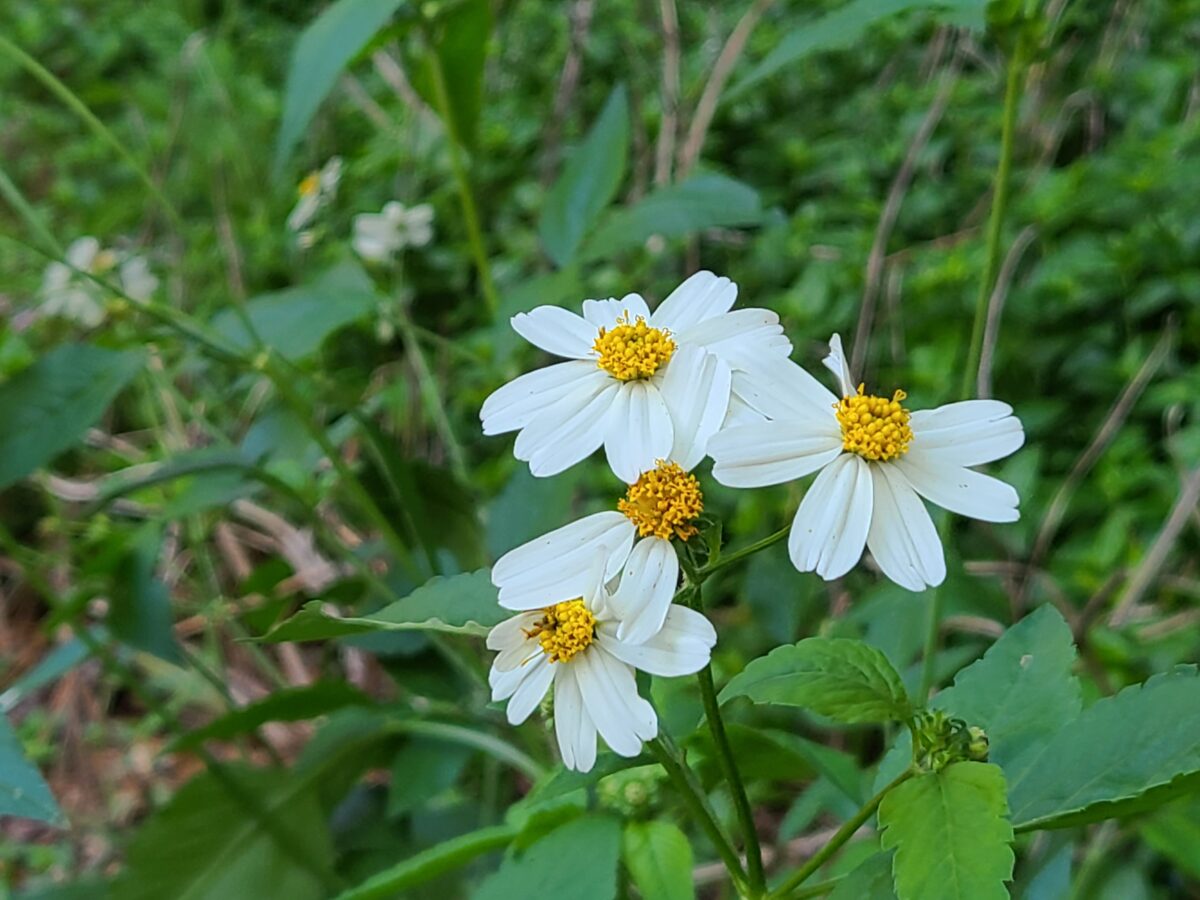Scientific name: Bidens alba, Bidens pilosa
Other common names: beggarticks, Spanish needles, butterfly needles, bur-marigolds, stickseeds, tickseeds, tickseed sunflowers, and pitchfork weed.1
Spanish: romerillo
Latin America: moriseco
Identification
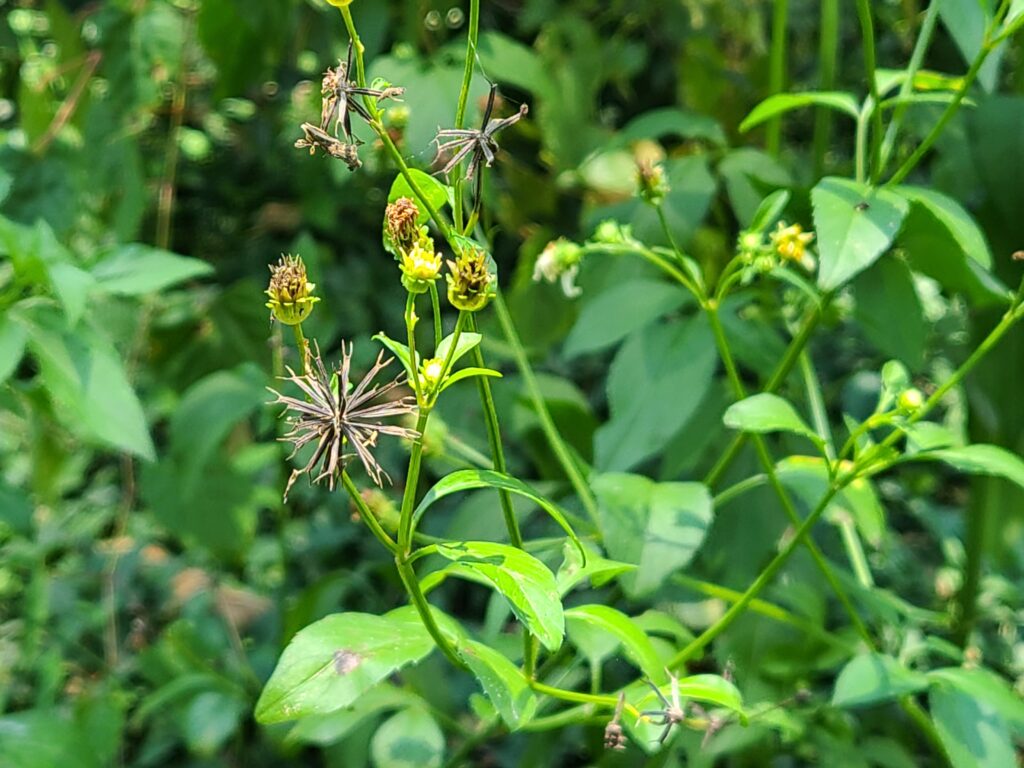
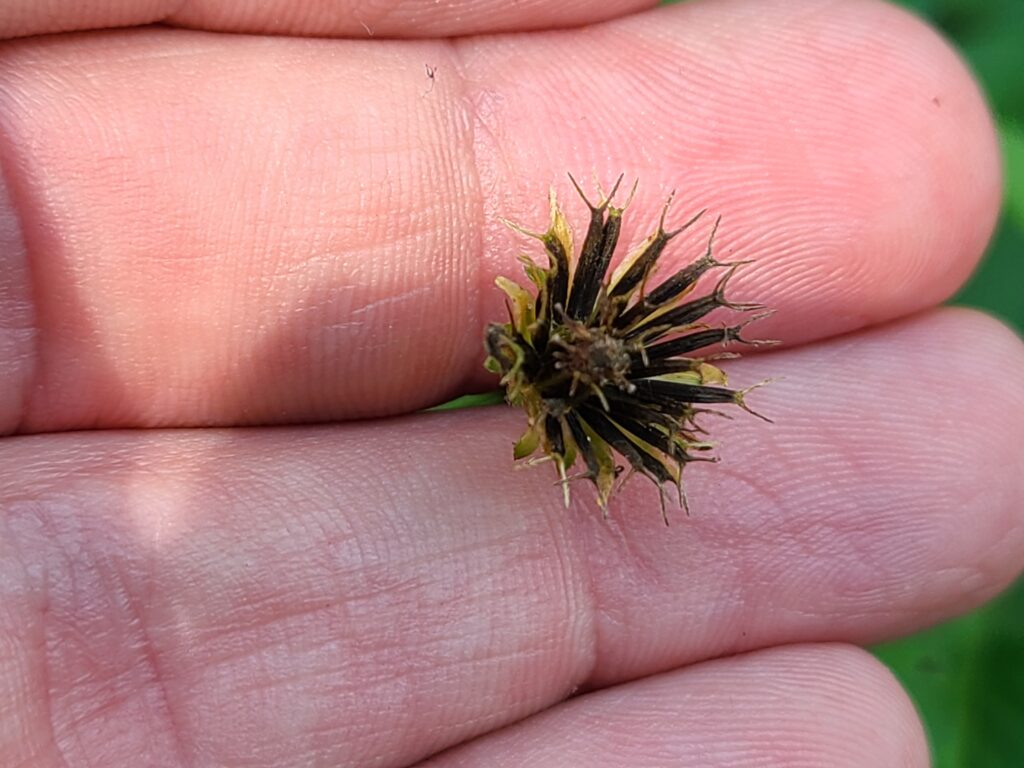
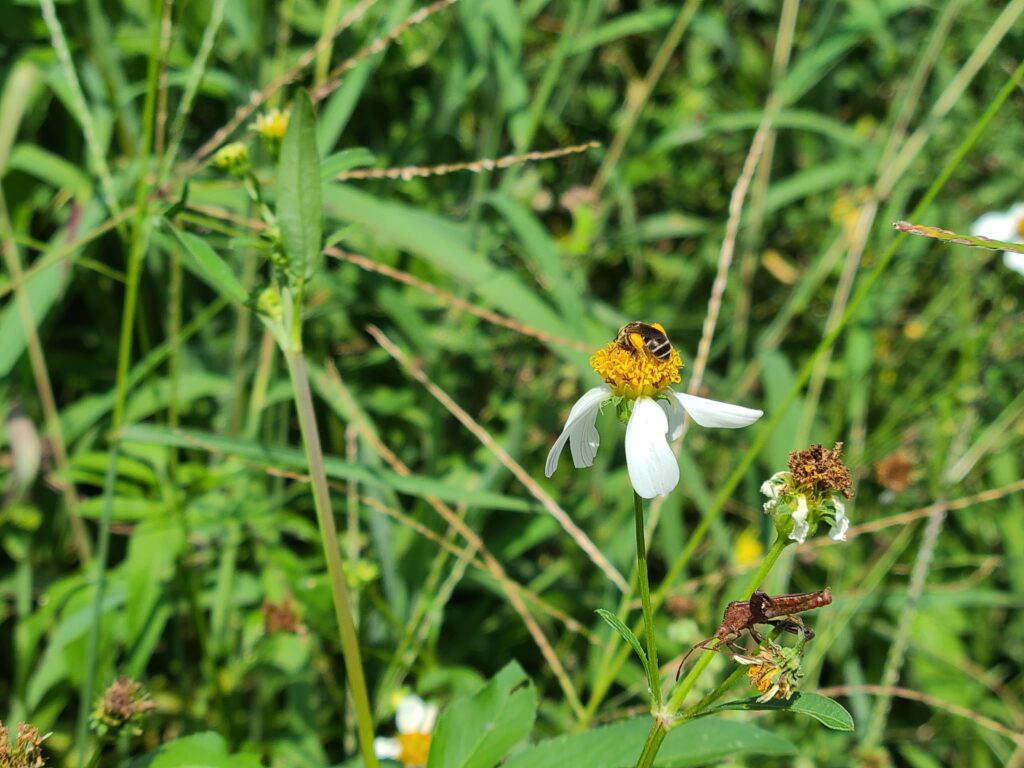
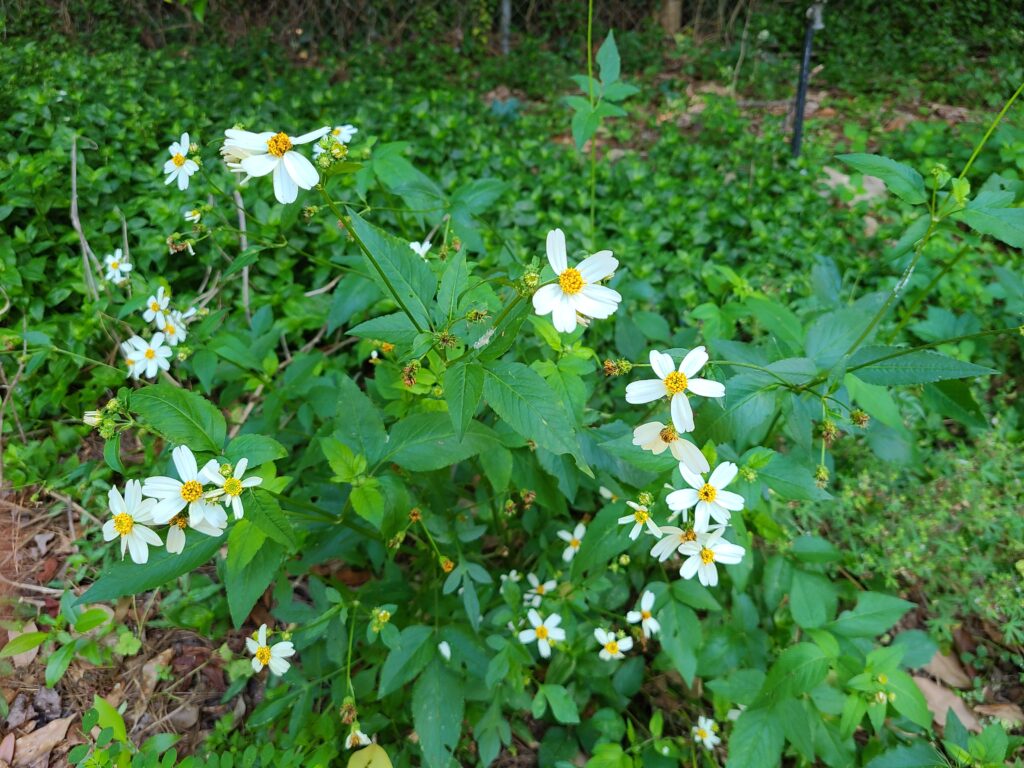
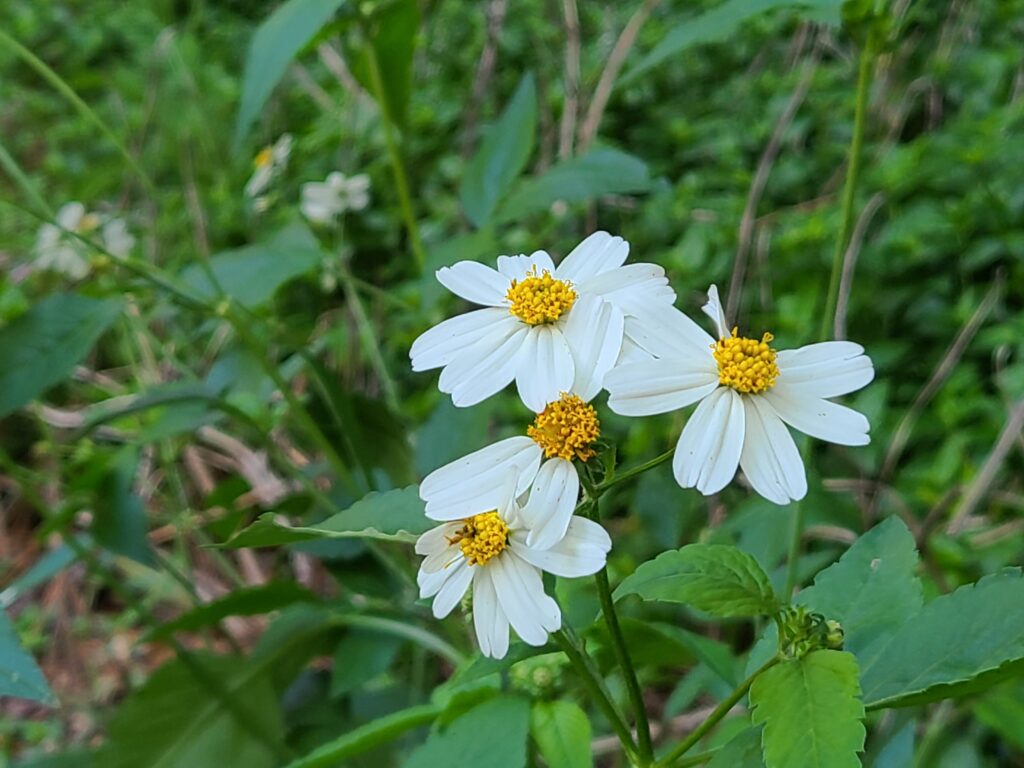
The plant can grow up to 6 feet in ideal conditions but is usually 2-3 feet tall. It often sprawls and roots grow at the lower nodes if it touches the ground.
The leaves are compound, meaning that what looks like multiple leaves is actually just one leaf. Each leaf is composed of 3-9 saw-toothed opposite oval leaflets. Opposite means leaflets come out on either side of a central stem in pairs with a single leaflet at the end. The leaves are one to five inches long and up to two and a half inches wide.2
The one-inch flowers in clusters look like coarse daisies with five or more white outer petals and a yellow center.3
The seeds resemble flat black needles with 2 barbed “teeth” at the end. The teeth cling to clothing and fur and are how they spread. The seeds are where the plant gets its genus name, Bidens, derived from the Latin words bis, meaning “two,” and dens, meaning “tooth.”4
Growing/Foraging
Bidens alba is not picky about soil, is drought-tolerant, and prefers full sun. They are easy to cultivate but grow so abundantly in this area it should not be necessary. If you have an open field or a lawn, you likely have some growing already.
Letting shephard’s needle grow around your garden may help reduce damaging insects. Agricultural research indicates that plants in the genus Bidens are host to beneficial parasitic insects that prey on other pest insects that damage citrus trees and tomatoes.56
Sustainability
A single Bidens alba plant can produce thousands of seeds. They grow abundantly most of the year in North Florida and are often considered invasive plants. There is no concern about overharvesting.
Medicinal and Food Properties
Shephard’s needles has been used traditionally for a variety of issues, most notably it reduces pain and is effective at treating ulcers, infections, and irritated tissue in the mouth, throat, stomach, digestive systems, and skin.
It’s effective at treating mouth and stomach issues including cold sores, canker sores,7 ulcers, toothaches, upset stomach, and sore throat.8 Early studies suggest that the plant might be an effective treatment for oral mucositis, which is caused by radiation and chemotherapy and includes soreness and bleeding in the mouth and throat.9
Bidens alba has a high concentration of myricetin,10 an antioxidant compound with a number of beneficial properties including anti-viral, anti-inflammatory, and neuroprotectant.11 The plant also contains oils that are antibacterial and antifungal.12 Finally, studies are confirming the analgesic, or pain relief, properties of plants in the Bidens genus that have long been known by traditional medicine.13
Antioxidants are compounds that protect human cells from damage that can lead to cancer, heart disease, and a variety of other illnesses.
Antiviral compounds kill or reduce the effectiveness of viruses. Antibacterial compounds are beneficial for treating bacterial infections. Antifungal herbs kill or impede the growth of fungi. These three effects together make Bidens alba an effective herb for treating a wide variety of infections and may explain why the plant is widely used in folk medicine for infections in the mouth and digestive system.
Anti-inflammatory compounds can reduce your body’s immune response when it’s acting up. Symptoms of inflammation include swelling, warmth, pain, and redness. That, alongside its analgesic properties, means Shephard’s Needles may be useful for relieving pain for people with rheumatoid arthritis or other auto-immune disorders.
According to Maggie with the Florida School of Holistic Living, many of the medicinal compounds in Bidens are lost if the plant is dried or heated. She recommends making a cold infusion tea, steeping fresh leaves in room temperature water for 6-8 hours, or making a tincture with high proof (170+) alcohol.14 Pharmacological studies have also shown that many of the antiviral compounds are sensitive to heat and light.15
The leaves of Bidens species are edible. The young leaves can be eaten fresh in salads or used as a potherb – cooked like collards or spinach. The flowers can be eaten fresh right off the plant or in salads. Caution is suggested for eating large quantities fresh because it contains a number of medicinal compounds that could cause issues in large amounts.
When cooked, dried, or used in hot tea, many of the anti-viral compounds are destroyed. However, the plant’s nutrient content, which includes beta-carotene, calcium, and iron, is retained.16
The dried leaves can be smoked as an alternative to tobacco. 17
Safety
Caution is suggested for eating large quantities fresh because it contains a number of medicinal compounds that could cause issues in large amounts. However, no specific contraindications were found when researching this plant.
Bidens alba can also pick up silica from the soil which is a known carcinogen, another reason to avoid using it in large quantities.18
Recipes
Our recipes
Tincture
Bidens alba tincture should be made with the fresh aerial parts of the plant using high-proof (170+) alcohol. Alcohol this high a proof is not available in many states including Florida but is available in Georgia.
Tea
When drinking to treat a sore or infection, cold-steep fresh aerial parts of the plant in cold or room temperature water for 6-8 hours. You can make a large amount to keep in the refrigerator and drink it over a couple of days.
A nutritive hot tea can be made with fresh or dried leaves on its own or in a tea blend with other herbs.
Other recipes
Bidens and Moringa Pesto
Sources
